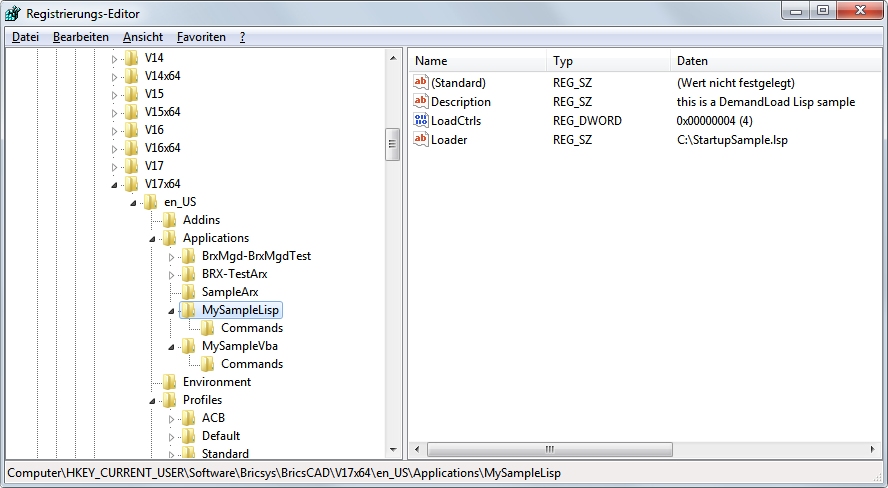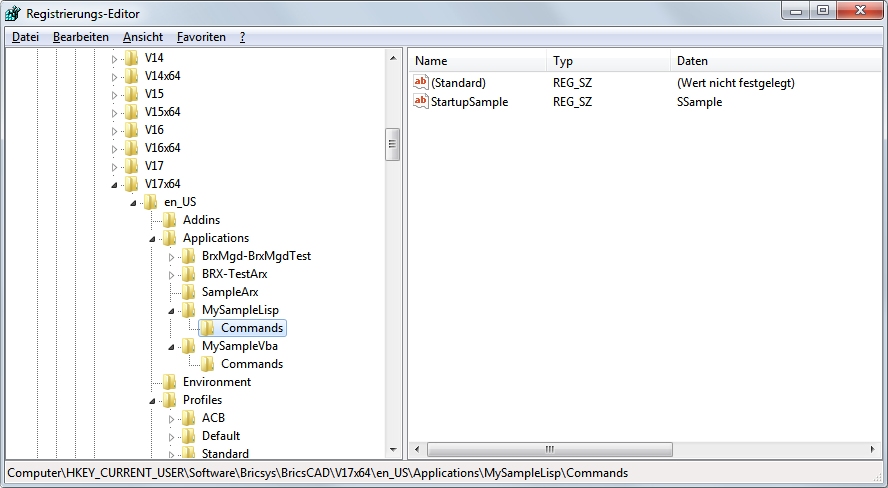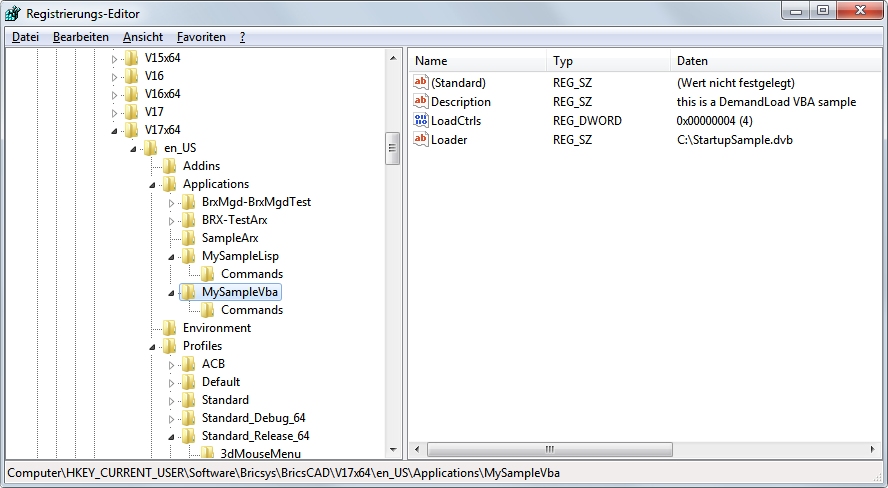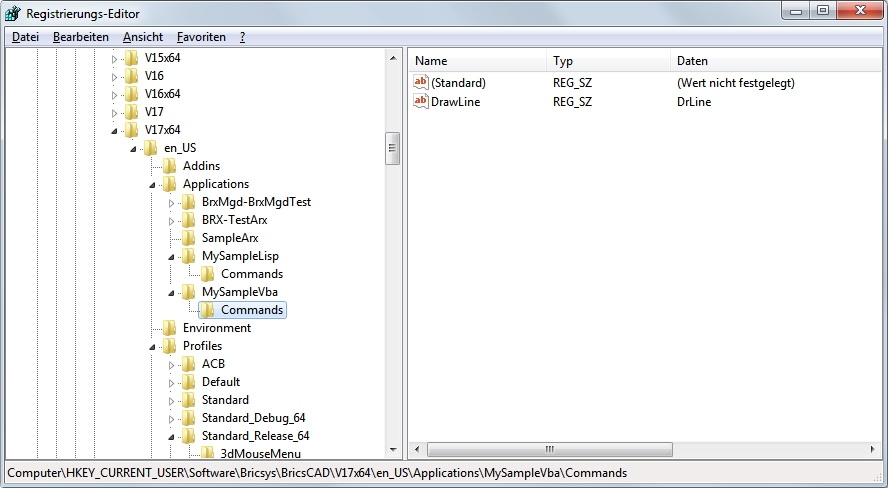Registry DemandLoad for LISP and VBA applications
Registry-based DemandLoad
functionality is available for ARX / BRX / .NET developers since
long time, to load ARX / BRX / .NET application modules on CAD
system startup, on presence of (application-specific) "custom
entities", on invocation of application-defined commands and
functions (and more), with flexibility and comfort.
This also allows such applications to
integrate nicely into the target CAD system, from an application
installer, adding dedicated Registry entries.
Since BricsCAD V17, this useful and smart
mechanism is also available for Lisp and VBA applications; all
usual rules as designed for BRX / .NET applications also apply to
Lisp and VBA files now, Lisp/VBA specific details are automatically
handled by BricsCAD, to provide a uniform and consistent
logic.
Registry Keys :
to define DemandLoad support for a Lisp/VBA
application, some Registry entries need to be defined (usually by
application installer);
for an application named "MyApplicationName" is
:
|
main Registry
Key, under |
|
Software\Bricsys\BricsCAD\<VersionKey>\<LanguageKey>\Applications\<MyApplicationName> |
|
Value Keys to define application behaviour |
|
Loader (string) = "application file name" : Lisp/VBA application
file, without path, with relative or absolute path |
|
.\Commands sub-key to optionally define application-specific commands |
|
"GlobalCmd" (string) =
"LocalCmd" : allows to define a
"localised" command name (optionally); |
Some notes for LISP based applications
LoadCtrls :
using 2 (OnStartup) means "loading for every
drawing", as loading on BricsCAD startup would likely not make much
sense;
using 4 (OnCommand) requires
that the Lisp application provides a Lisp command definition
(defun C:GlobalCmd ...) - there is no need to define a similar (defun C:LocalCmd ...) definition;
note 1 : the C:
prefix must not appear in Registry command name definitions
!
note 2 : based on
these Registry definitions, the BricsCAD DemandLoad mechanism
automatically creates internal wrappers for the C: commands, for
each opened/created drawing;
as a nice side-effect, the C:GlobalCmd and
C:LocalCmd commands are also available for CommandBar's
AutoComplete feature.
Some notes for VBA based applications
LoadCtrls :
using 2 (OnStartup) means "loading on BricsCAD
startup", as VBA files are loaded globally (like BRX + .NET
modules);
using 4 (OnCommand) requires
that the VBA application provides a main function
GlobalCmd - there
is no need to define a LocalCmd;
note 1 : based on
these Registry definitions, the BricsCAD DemandLoad mechanism
automatically creates internal wrappers for the commands, for each
opened/created drawing;
2 nice side-effects :
a) GlobalCmd and
LocalCmd commands
are also available for CommandBar's AutoComplete
feature
b) normally, VBA applications can not define
own commands, which are available at command line - using
DemandLoad mechanism this is now possible (based on those
automatically created command wrappers)
Please see these images for the above-mentioned Registry keys :
|
|
|
|
|
LISP application : main registry entries, defining the module's properties (using OnCommand loading) |
|
|
|
|
|
LISP application : "Command" registry entries, defining the Lisp commands |
|
|
|
|
|
VBA application : main registry entries, defining the module's properties (using OnCommand loading) |
|
|
|
|
|
VBA application : "Command" registry entries, defining the VBA commands |



